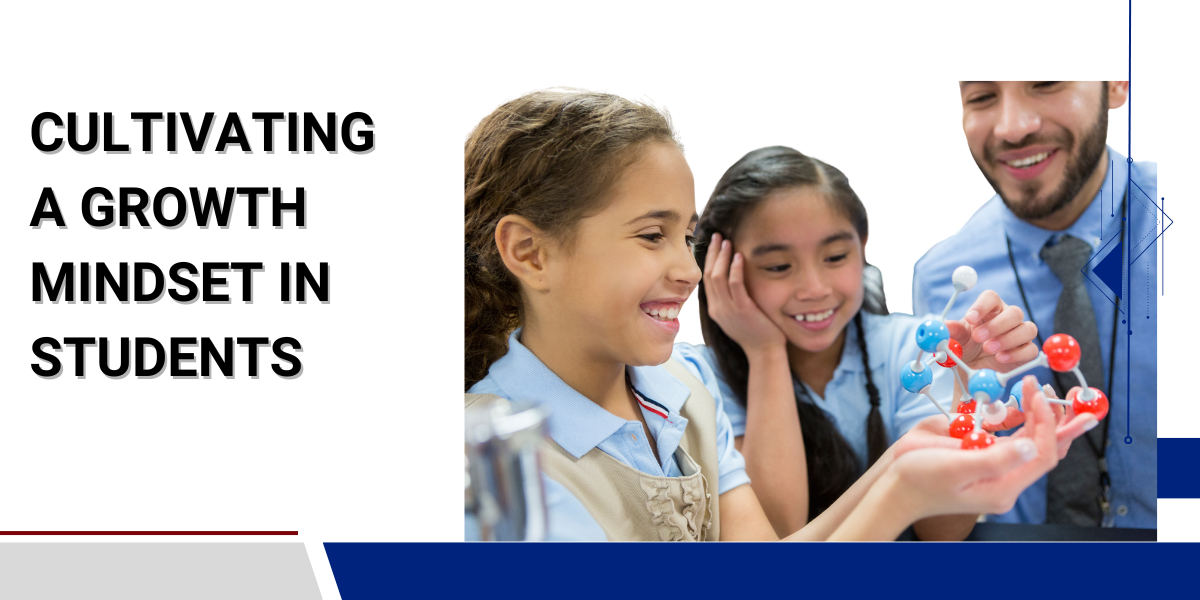In today’s world, the capacity to adapt, learn, and develop is indispensable. At AES Ghaziabad, we believe in giving our students more than just academic knowledge. To help students succeed in a world that is constantly evolving, we work hard to give them the tools they need. A growth mindset is one such vital talent; it’s a way of thinking that encourages perseverance, flexibility, and a love of learning. In this blog, we will discuss ways that may help students develop a growth mindset, which will provide them the tools they need to persevere in the face of adversity, see failure as a necessary step on the road to success, and ultimately realize their potential.
- A Growth Mindset is a Concept You Should Introduce
The first step is to teach them to adopt a growth attitude. Contrast a growth mentality with a fixed mindset, explaining how one’s talents and IQ can be nurtured through hard work and persistence. In order to help kids, succeed in school and in life, you should encourage them to develop a growth mentality.
- Give Students Inspiring Examples to Follow
Introduce students to role models who have successfully adopted a growth mindset. Tell the inspiring tales of famous people from all walks of life who overcame incredible odds to attain their goals. This teaches them that success is not instantaneous but rather the consequence of hard work and perseverance over time.
- Create a Comfortable and Productive Classroom
Foster a safe and open space for students to share their ideas and take intellectual risks. Promote group work as a means for students to learn from one another and aid one another’s development. Get students to give each other feedback and think about what they’ve learned from their experiences.
- Instill a sense of Fortitude and Tenacity
Add in some lessons and exercises that focus on building resiliency and perseverance. Give your kids hard homework and projects that will force them to think critically and find creative solutions. Walk them through it, stressing the value of tenacity, flexibility, and a positive attitude towards setbacks.
- Promote Introspection and Objective Setting
Make it a routine for students to engage in activities that encourage them to evaluate their own accomplishments, shortcomings, and potential for improvement. Instruct them in the art of goal-setting by helping them determine what they can realistically achieve. Assist them in slicing these objectives into manageable chunks, and encourage them to keep tabs on their progress and enjoy minor victories along the way.
- Focus on Effort and Education
Focus less on final marks and more on how hard students are trying to learn. Students should be commended for their efforts, perseverance, and resourcefulness in the face of adversity. Motivate them to see setbacks and errors as learning experiences. Instruct them to reflect on their actions, pinpoint opportunities for growth, and use this knowledge to better succeed in the future.
- Give them some helpful criticism
Give pupils timely, useful criticism that draws attention to both their accomplishments and their weaknesses. Make sure the criticism is constructive rather than destructive by focusing on how they might improve. Instruct students to view constructive criticism as an opportunity for growth and to actively seek it out from both instructors and peers.
- Implement a Growth Mindset Teaching Method
Incorporate open-ended assignments, project-based learning, and problem-solving exercises into the curriculum to instill growth mindset ideas. Include activities that encourage kids to think critically, creatively, and innovatively. Inspire independence and interest by having students take charge of their own education.
Conclusion
Students at AES Ghaziabad would benefit greatly from developing a growth attitude. Using these methods, we can make school a place where students feel safe, supported, and encouraged to take risks and grow as learners. Let’s equip the next generation to take risks, view setbacks as learning experiences, and adapt to a world that’s constantly shifting. We can raise a new generation if we work together.


